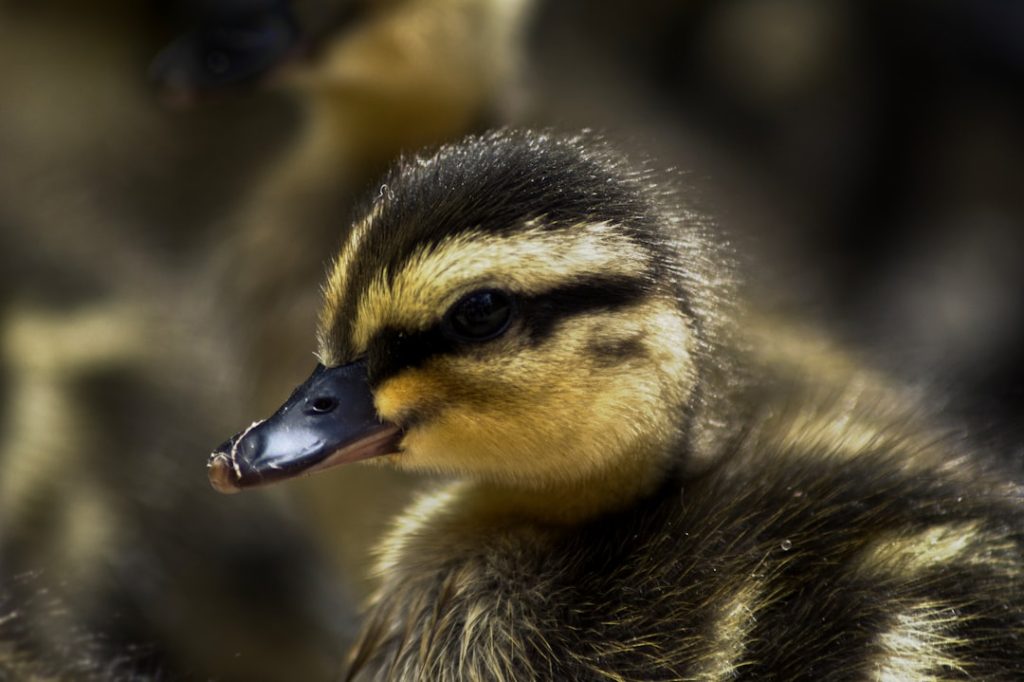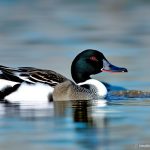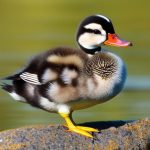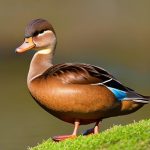Ducks come in a wide variety of breeds, each with its own unique characteristics and traits. Some of the most popular duck breeds include the Pekin, Mallard, Rouen, Khaki Campbell, and Muscovy. Each breed has its own distinct appearance, size, and coloration. For example, the Pekin duck is known for its large size and white feathers, while the Mallard is smaller and has a distinctive iridescent green head. The Rouen duck is similar in appearance to the Mallard but is larger and heavier. The Khaki Campbell is known for its excellent egg-laying abilities, while the Muscovy has a unique appearance with its red facial caruncles.
In addition to physical characteristics, different duck breeds also have varying temperaments and behaviors. Some breeds are more docile and friendly, making them suitable for pets or backyard flock animals, while others are more independent and may be better suited for free-range or commercial farming operations. Understanding the differences between duck breeds is important for anyone considering raising ducks, as it can help you choose the right breed for your specific needs and preferences.
Table of Contents
- 1 Choosing the Right Duck Breed for Your Needs
- 2 Caring for Ducklings of Different Breeds
- 3 Differences in Growth and Development Among Duck Breeds
- 4 Feeding and Nutrition for Different Duck Breeds
- 5 Health and Wellness Considerations for Ducklings
- 6 Training and Socialization for Ducklings of Various Breeds
- 7 FAQs
- 7.1 What are some common duck breeds for raising ducklings?
- 7.2 What are the characteristics of Pekin ducklings?
- 7.3 What are the characteristics of Khaki Campbell ducklings?
- 7.4 What are the characteristics of Indian Runner ducklings?
- 7.5 What are the characteristics of Rouen ducklings?
- 7.6 What should I consider when raising ducklings of different breeds?
Key Takeaways
- There are many different duck breeds, each with unique characteristics and traits
- When choosing a duck breed, consider factors such as egg production, meat quality, and temperament
- Caring for ducklings of different breeds requires attention to their specific needs and behaviors
- Growth and development can vary significantly among different duck breeds
- Feeding and nutrition requirements can differ based on the breed of duck
- Health and wellness considerations for ducklings should take into account breed-specific vulnerabilities
- Training and socialization are important for ducklings of all breeds, but methods may vary based on breed characteristics
Choosing the Right Duck Breed for Your Needs
When it comes to choosing the right duck breed for your needs, there are several factors to consider. First and foremost, you should think about the purpose of raising ducks. Are you looking for a breed that is good for egg production, meat production, or simply as a pet? If you are interested in egg production, breeds like the Khaki Campbell or Indian Runner may be good choices due to their high egg-laying capabilities. For meat production, larger breeds like the Pekin or Muscovy may be more suitable. If you are looking for a friendly and sociable pet, breeds like the Pekin or Rouen may be good options.
Another important factor to consider when choosing a duck breed is the climate and environment in which you live. Some breeds are more cold-hardy and can tolerate colder temperatures, while others may be better suited for warmer climates. Additionally, consider the space you have available for raising ducks. Some breeds are better suited for free-range environments, while others may do well in smaller backyard settings. By taking these factors into consideration, you can choose the right duck breed that will thrive in your specific circumstances.
Caring for Ducklings of Different Breeds
Caring for ducklings of different breeds requires attention to their specific needs and requirements. When raising ducklings, it is important to provide them with a warm and safe environment, as well as access to clean water and nutritious food. Ducklings should be kept in a brooder with a heat lamp to maintain a temperature of around 85-90 degrees Fahrenheit during the first week of life, gradually decreasing the temperature by 5 degrees each week until they are fully feathered.
In addition to providing a suitable environment, it is important to handle ducklings gently and socialize them from a young age to ensure they become friendly and well-adjusted adults. This involves spending time with them, talking to them, and gently handling them to get them used to human interaction. It is also important to provide ducklings with access to water for swimming and foraging opportunities to encourage natural behaviors and development. By providing proper care and socialization, ducklings of different breeds can grow up to be healthy and well-adjusted adult ducks.
Differences in Growth and Development Among Duck Breeds
Duck breeds vary in their growth and development rates, with some breeds reaching maturity faster than others. For example, the Pekin duck is known for its rapid growth rate and can reach market weight in as little as 7-8 weeks. On the other hand, breeds like the Muscovy may take longer to reach maturity, typically around 12-14 weeks. Understanding the growth and development differences among duck breeds is important for planning and managing your flock effectively.
In addition to growth rates, different duck breeds also vary in their egg-laying capabilities. Breeds like the Khaki Campbell are known for their high egg production, laying up to 300 eggs per year, while other breeds may lay fewer eggs. By understanding these differences, you can make informed decisions about which breeds to raise based on your specific goals and needs.
Feeding and Nutrition for Different Duck Breeds
Feeding and nutrition requirements can vary among different duck breeds based on their size, age, and purpose. Ducklings require a high-protein starter feed (18-20% protein) for the first few weeks of life to support their rapid growth and development. As they mature, ducks can transition to a grower feed (14-16% protein) and eventually to a layer feed (16-18% protein) for egg-laying breeds.
In addition to commercial feeds, ducks also benefit from access to fresh greens, insects, and other natural forage as part of their diet. Some breeds may have specific dietary needs or preferences based on their natural behaviors and instincts. For example, dabbling ducks like the Mallard may enjoy foraging in shallow water for aquatic plants and insects, while diving ducks like the Canvasback may prefer diving for fish and crustaceans. By understanding the feeding and nutrition requirements of different duck breeds, you can ensure that they receive a balanced diet that supports their health and well-being.
Health and Wellness Considerations for Ducklings
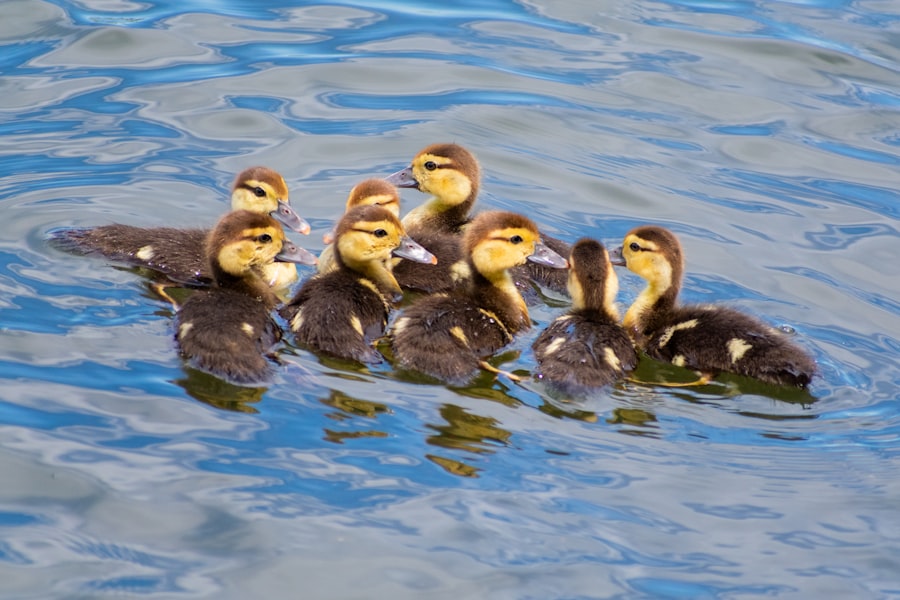
Ensuring the health and wellness of ducklings is essential for their long-term well-being. Ducklings are susceptible to various health issues such as respiratory infections, nutritional deficiencies, and parasites. Providing a clean and dry environment, access to fresh water, and a balanced diet are essential for preventing health problems in ducklings.
Regular health checks and monitoring for signs of illness or distress are important for early detection and treatment of any health issues that may arise. Additionally, vaccination against common diseases such as duck viral enteritis (DVE) and avian influenza can help protect ducklings from serious illnesses.
Proper hygiene practices such as regular cleaning of waterers and bedding, as well as providing adequate space for exercise and natural behaviors, can also contribute to the overall health and wellness of ducklings. By prioritizing their health needs, you can ensure that ducklings of different breeds grow up to be healthy and thriving adult ducks.
Training and socialization play an important role in shaping the behavior and temperament of ducklings as they mature into adult ducks. Socializing ducklings from a young age involves spending time with them, talking to them, and gently handling them to get them used to human interaction. This helps them become comfortable around people and reduces fearfulness as they grow older.
In addition to socialization, training can also help teach ducklings basic commands and behaviors that can make them easier to handle and manage as adults. For example, training ducklings to come when called or to enter a pen on command can be useful for managing them in a backyard or farm setting.
Training and socialization should be tailored to the specific needs and behaviors of different duck breeds. Some breeds may be more naturally friendly and sociable, while others may be more independent or skittish. By understanding the unique characteristics of each breed, you can develop training and socialization strategies that are effective for raising well-behaved and well-adjusted adult ducks.
If you’re considering raising ducklings, it’s important to provide them with a suitable environment to thrive. One crucial aspect of their care is ensuring they have the right temperature in their coop. This article on heaters for a chicken coop offers valuable insights into maintaining the ideal warmth for your ducklings, which is essential for their health and well-being. Additionally, creating a comfortable and secure space for your ducklings, such as a garden chicken coop, can contribute to their overall happiness and development. Considering these factors will help you create a nurturing environment for your ducklings as they grow.
FAQs
What are some common duck breeds for raising ducklings?
Some common duck breeds for raising ducklings include Pekin, Khaki Campbell, Indian Runner, and Rouen ducks.
What are the characteristics of Pekin ducklings?
Pekin ducklings are known for their white feathers, orange bills, and friendly disposition. They are a popular choice for meat production and are also good egg layers.
What are the characteristics of Khaki Campbell ducklings?
Khaki Campbell ducklings are known for their khaki-colored feathers and excellent egg-laying abilities. They are a popular choice for backyard duck farming.
What are the characteristics of Indian Runner ducklings?
Indian Runner ducklings are known for their upright posture and distinctive “runner” appearance. They are good foragers and are often used for pest control in gardens.
What are the characteristics of Rouen ducklings?
Rouen ducklings are known for their striking plumage, which resembles that of a Mallard duck. They are a dual-purpose breed, suitable for both meat and egg production.
What should I consider when raising ducklings of different breeds?
When raising ducklings of different breeds, it’s important to consider their specific needs in terms of housing, feeding, and care. Some breeds may require more space or specialized diets, so it’s important to research each breed’s requirements.
Meet Walter, the feathered-friend fanatic of Florida! Nestled in the sunshine state, Walter struts through life with his feathered companions, clucking his way to happiness. With a coop that’s fancier than a five-star hotel, he’s the Don Juan of the chicken world. When he’s not teaching his hens to do the cha-cha, you’ll find him in a heated debate with his prized rooster, Sir Clucks-a-Lot. Walter’s poultry passion is no yolk; he’s the sunny-side-up guy you never knew you needed in your flock of friends!

